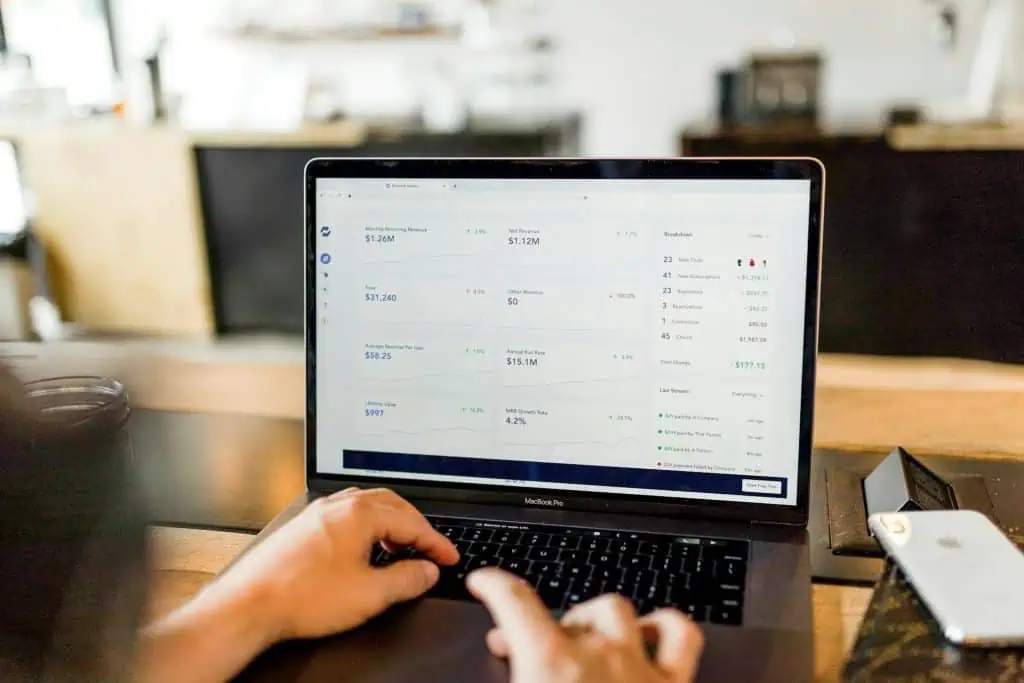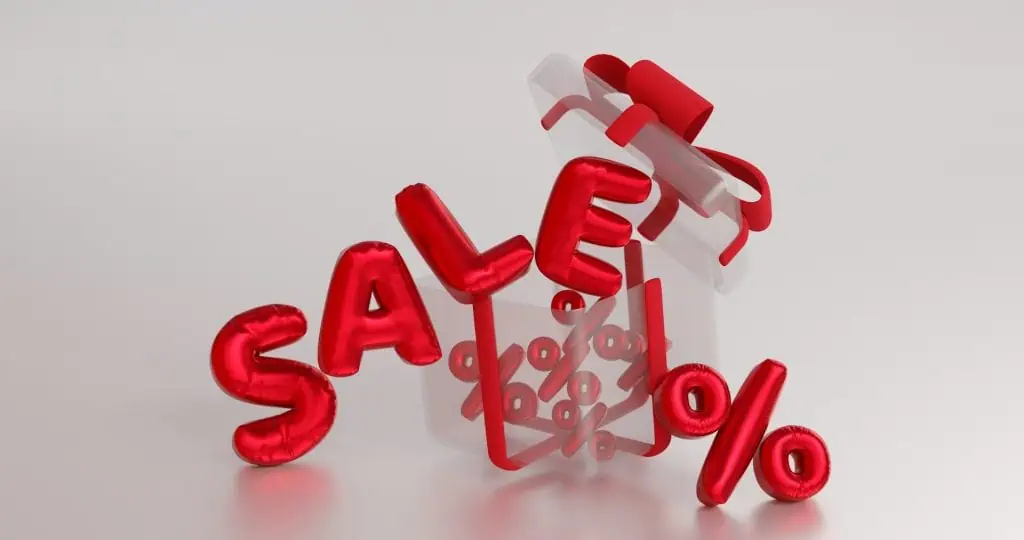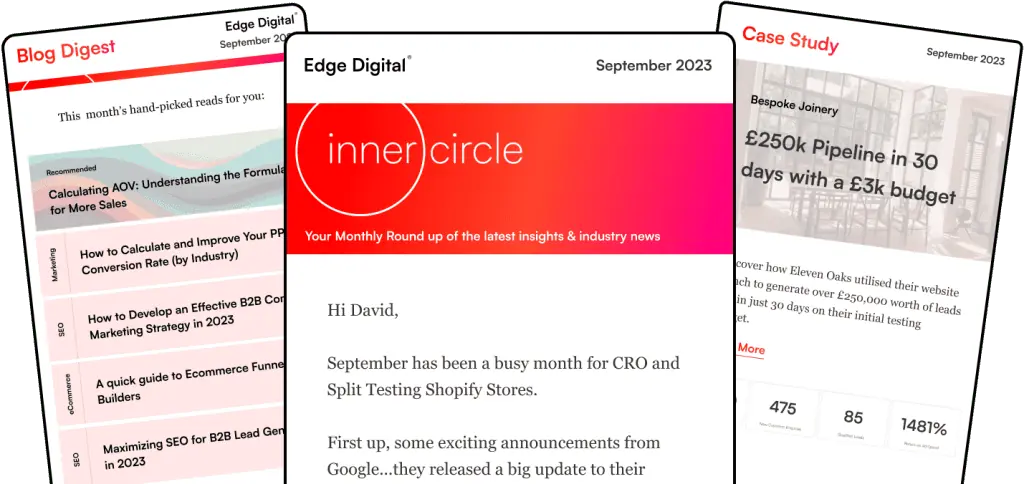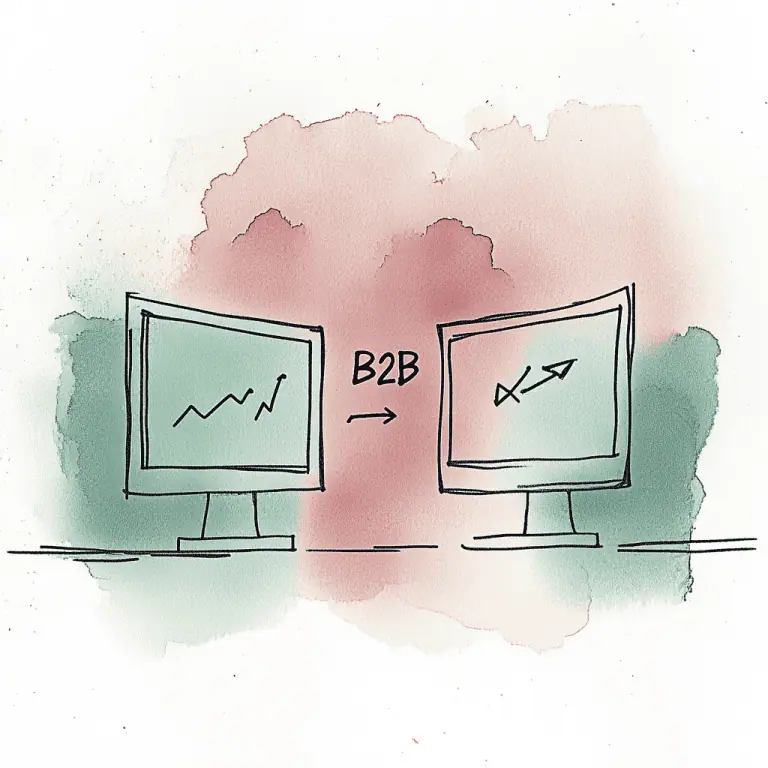In the ever-evolving world of ecommerce, understanding your customers and their spending habits is crucial for growth. One metric that can unlock a treasure trove of insights is Average Order Value (AOV). By mastering the art of calculating AOV, businesses can gain a competitive edge, optimize their marketing strategies, and increase revenue. Join us as we take a deep dive into the world of calculating AOV, its average order value formula, factors that influence it, and practical strategies to improve this essential metric.
Key Takeaways
Understanding Average Order Value (AOV) is essential for ecommerce businesses to gain insights into customer spending patterns and behaviours.
Strategies such as upselling, cross-selling, product bundling & discounts, and incentives/rewards can help increase AOV.
Common mistakes to avoid include not tracking average order value or setting an arbitrarily high threshold.

Understanding AOV: The Basics
Average Order Value (AOV) is a key metric for ecommerce businesses, measuring the average dollar amount spent per order. By calculating average order, businesses can gain valuable insights into customer spending patterns and behaviors. This metric not only helps businesses optimize their customer acquisition cost but also enables them to effectively assess their marketing and pricing strategies based on their company’s average order.
Increasing AOV can result in a higher Return on Investment (ROI) and help grow a store without requiring substantial advertising expenditure. Focusing on high-value customers, as opposed to low-value ones, can bolster a business’s bottom line. Keeping track of AOV allows businesses to quickly determine the effectiveness of store modifications, thereby facilitating data-driven decisions.
Optimizing AOV has a ripple effect, resulting in increased brand loyalty over time with each successive order.
Calculating AOV: The Formula
Calculating an ecommerce stores‘ AOV is quite straightforward. The average order value formula involves dividing the total revenue by the number of orders. To calculate AOV, simply divide the total revenue, which is the gross profit before deducting expenses, by the number of orders placed. To illustrate, let’s say an online store accrued $100,000 in revenue from 2,000 orders in the third quarter. In this case, the AOV would be $50. This simple calculation helps businesses evaluate their marketing and pricing strategies, ensuring they stay on the right track to success.
AOV should not be mistaken for sales per customer; it strictly measures the average money customers spend per order. When calculating AOV, businesses should establish a time period relevant to their customer base and monitor the total number of orders completed within this period. This allows for accurate and consistent tracking of the metric, ensuring data-driven decision-making.
AOV Calculator
#aov-calc { display: flex; flex-direction: column; background-color: var(–accent-trans-20); padding: var(–space-m); } #aov-calc-results { background-color: var(–primary-light); padding: var(–space-m); margin-bottom: var(–space-m); }
Total Revenue: Number of Orders (monthly): Purchase Frequency: Average Customer Lifespan (years):
Results:
Average Order Value (AOV): $0
Customer Lifetime Value (CLV): $0
function calculateValues() { // Get values from the form let revenue = parseFloat(document.getElementById(‘revenue’).value); let orders = parseFloat(document.getElementById(‘orders’).value); let frequency = parseFloat(document.getElementById(‘frequency’).value); let lifespan = parseFloat(document.getElementById(‘lifespan’).value); // Calculate AOV and CLV let AOV = revenue / orders; let CLV = AOV * frequency * lifespan; // Display results document.getElementById(‘resultAOV’).textContent = AOV.toFixed(2); document.getElementById(‘resultCLV’).textContent = CLV.toFixed(2); }
Factors Influencing AOV
AOV can be affected by various factors, including customer behavior, product offerings, and external events or promotions.
A deeper exploration of these factors can enhance understanding of their influence on AOV, and subsequently aid businesses in optimizing their strategies through informed decisions.
Customer Behavior
Customer behavior plays a significant role in influencing average order value (AOV). Factors such as:
Purchasing habits
Preferences
The number of items purchased
The frequency of purchases
The willingness to spend more
These factors can help identify low value customers and improve strategies to increase the average order value.
All can impact the average order value. Analyzing customer behavior data enables businesses to customize their strategies to attract high-value customers and encourage greater spending, thereby increasing AOV.
Understanding and analyzing customer behavior also allows businesses to optimize their marketing and pricing strategies, identify trends, and maximize revenue. Keeping a close eye on customer preferences, habits, and demographics equips businesses to make data-driven decisions and maintain a competitive edge.
Product Offerings and Pricing
Product offerings and pricing strategies can have a considerable influence on AOV. Variations in product categories, pricing strategies, and promotional activities can all impact the average order value. Offering a diverse range of products, as well as adopting dynamic pricing strategies, can help businesses cater to different customer segments and maximize their revenue potential.
Additionally, product bundling and volume discounts can encourage customers to purchase more, thus increasing AOV. Strategically bundling complementary products or offering bulk purchase discounts can incentivize customers to spend more, thereby increasing AOV and improving profitability.

External Events and Promotions
External events and promotions, such as seasonal sales, holidays, and marketing campaigns, can also have a significant impact on AOV. These events often create a sense of urgency, prompting customers to make larger purchases and take advantage of limited-time offers.
Careful planning and execution of external events and promotions can effectively increase AOV and generate higher revenue for businesses. Paying attention to economic conditions and industry trends can also help businesses adapt their strategies to capitalize on opportunities and maintain a competitive edge in the market.
Strategies to Improve AOV
There are several strategies businesses can employ to improve AOV and focus on increasing average order value, such as implementing upselling and cross-selling techniques, offering product bundles or volume discounts, and providing incentives and rewards to customers.
Exploring these strategies in detail can shed light on how they could contribute to an increase in AOV.
Upselling and Cross-Selling Techniques
Upselling and cross-selling techniques involve offering customers additional products or services that are related to the product they are already purchasing, in order to increase sales and revenue.
Tailoring product recommendations based on each customer’s preferences and purchasing history can increase the chances of successful upselling or cross-selling, resulting in a higher AOV and improved customer satisfaction.
Product Bundling and Discounts
Product bundling involves offering customers a package of products at a discounted price, as opposed to individual items. This strategy can be beneficial in increasing sales, attracting customers, and creating a favorable brand image.
Offering product bundles or volume discounts can increase AOV by incentivizing customers to buy more. Leveraging customer purchase data allows businesses to suggest ideal product combinations for their website, including individual SKUs and product categories. Monitoring cart abandonment and conversion rates can help businesses fine-tune their product bundling strategy and ensure it effectively increases AOV.
The Shopify Blog has a great article with some Examples and benefits for product bundling.
Incentives and Rewards
Providing free gifts, rewards, or free shipping can encourage customers to spend more, thus increasing AOV. Setting a minimum purchase amount for customers to qualify for free shipping or other benefits can further incentivize higher spending. Incentives and rewards can motivate customers to make additional purchases, leading to a higher overall AOV.
Implementing a loyalty program or offering exclusive discounts to repeat customers can further enhance AOV, as customers are more likely to spend more when they feel appreciated and valued. The key is to strike a balance between offering attractive incentives and maintaining profitability, ensuring long-term success for the business.

Tracking and Analyzing AOV
To effectively optimize AOV, businesses must:
Track and analyze this metric using digital analytics platforms
Use cohort analysis to understand customer behavior and trends
Monitor and optimize AOV to make data-driven decisions
Stay ahead of the competition
These tools can help businesses achieve their goals and maximize their revenue.
Digital Analytics Platforms
Digital analytics platforms, such as:
enable businesses to track AOV and other ecommerce metrics in real-time. By gathering real-time data on customer behavior, website performance, and marketing campaigns, businesses can personalize customer experiences and make informed decisions to optimize their strategies.
Using digital analytics platforms can help businesses identify trends, spot opportunities for improvement, and ensure their marketing efforts are driving the desired results. Staying abreast of AOV and other key metrics helps businesses maintain a competitive edge in the dynamic ecommerce landscape.
Cohort Analysis and Segmentation
Cohort analysis is a method of segmenting users or customers based on shared characteristics or behaviors over a specific period of time. By grouping individuals into cohorts and analyzing their behavior within those groups, businesses can create tailored marketing and optimization strategies that resonate with their target audience.
Analyzing AOV by customer groups or product categories can help businesses identify trends and opportunities for improvement. Monitoring these cohorts over time allows businesses to refine their strategies and ensure they are achieving the desired results, ultimately leading to increased AOV and revenue.
Case Studies: Successful AOV Improvement
Learning from real-life examples is an excellent way to gain insights into successful AOV improvement strategies. Here are some case studies that showcase the power of effective AOV optimization techniques:
Mobovida, which raised their AOV by more than 10%
A wine webshop that achieved a 130% increase in wine AOV
Yellowfin that enabled businesses to improve AOV
TIBCO Spotfire that enabled businesses to realize measurable benefits in AOV
These examples demonstrate how implementing AOV optimization strategies can lead to significant improvements in the total revenue generated.
These case studies demonstrate that businesses can successfully boost their AOV through a range of strategies and tactics. Implementing a balanced combination of:
Upselling
Cross-selling
Product bundling
Incentives
Rewards
can significantly enhance a business’s AOV and promote sustainable growth.
Common AOV Calculation Mistakes to Avoid
Awareness of potential pitfalls and avoidance of common mistakes is important when calculating AOV. Some of these mistakes include:
Not tracking average order value
Placing too much emphasis on increasing AOV
Setting an arbitrarily high threshold
Not maintaining consistent revenue and order data tracking.
The consequences of these errors can be severe, leading to a decrease in customer satisfaction, attrition of customers, and a decline in total revenue. Avoiding these common mistakes can help businesses ensure accurate AOV calculations, make data-driven decisions, and optimize their strategies for sustained success.
Summary
In conclusion, understanding and optimizing Average Order Value is crucial for ecommerce businesses looking to stay ahead of the competition. By mastering the AOV formula, considering key influencing factors, and implementing effective strategies to improve AOV, businesses can maximize their revenue potential and achieve sustainable growth. As the ecommerce landscape continues to evolve, staying on top of AOV and other essential metrics will be instrumental in maintaining a competitive edge and driving business success.
Frequently Asked Questions
What is AOV in metrics?
Average Order Value (AOV) is a metric that measures the average dollar amount spent per order on a website or mobile app. It is calculated by dividing total revenue by the number of orders. AOV helps to track how successful an eCommerce store is in terms of converting sales and generating revenue.
What is the AOV volume?
Average Order Volume (AOV) is a measurement of the average dollar amount spent each time a customer places an order on a website or mobile app. It is calculated by dividing total revenue by the number of orders. Monitoring and optimizing AOV can be helpful for businesses to gain insight into their customers’ purchasing behavior.
How do you calculate average order value per customer?
Average Order Value (AOV) is calculated by dividing the total revenue generated over a specific period by the total number of orders placed in that same period. The AOV formula is revenue divided by number of orders and tracks the average dollar amount spent each time a customer places an order.
How do you calculate average items per order?
To calculate average items per order, divide the total number of items sold by the total number of orders. For instance, if 200 items were sold in 50 orders, the ANPI would be four. This same calculation can be done to determine Average Order Value (AOV) by dividing total revenue by the number of orders.
What factors can influence AOV?
AOV is influenced by a range of factors, such as customer behavior, product selection and external events or promotions.



